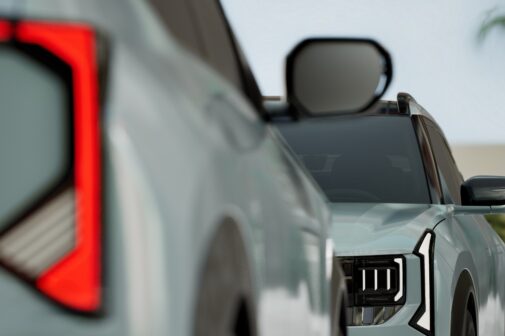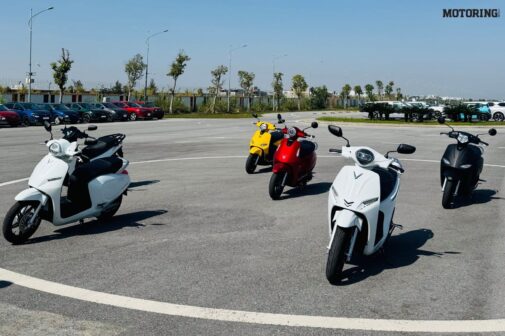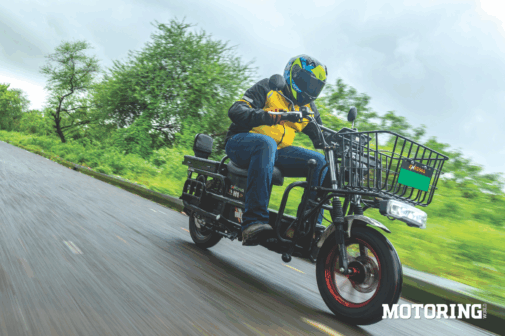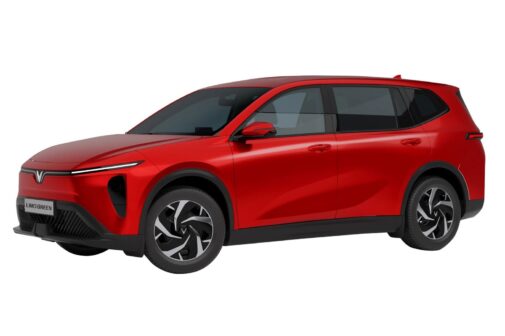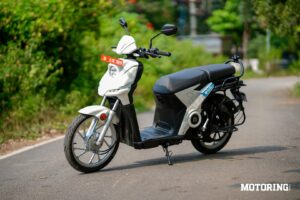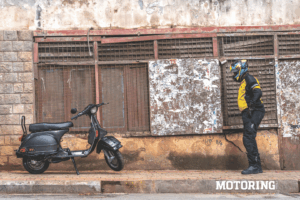Would you kill if it weren’t against the law? Or steal, if it didn’t come with the burden of imprisonment? Think about it. Your choices in a world undefined by a rulebook may have been wildly different to the life you lead today. Or would they? You see, most of us — I strongly believe — live, instinctively, by an invisible entity we know as a moral compass. As such, the rule of law isn’t a threshold but rather a peripheral, far-set blur we keep comfortably away from. Well, most of us, at least.
For those of you who don’t, there’s a scooter I have to tell you about. It’s called the Enigma H1 Loader and it’s a shining example of India’s growing class of micro-mobility EVs. This elongated, decidedly utilitarian electric scooter is essentially a last-mile cargo vehicle, aimed primarily at replacing the humble handcart. It’s also meant to serve as a robust alternative to cargo-laden ICE scooters, which you aren’t technically supposed to use for commercial activities. Enigma, a Bhopal-based manufacturer, produces a range of youthful scooters with nameplates like ‘Crink’ and ‘Ambier’, but none of those are as ‘out there’ as the H1 Loader. There are others like it, too. You can have the Vajra, by Tiranga Autotech, for instance or, in fact, a few others from smaller operators depending on how deep into the country you’re willing to go. The H1 Loader makes its distinctions evident through ample decalling, the most prominent of which is ‘Heavy One’ written in a font similar to the TVS XL100’s ‘Heavy Duty’ sticker. Enigma, as you can tell, likes to keep to facts.
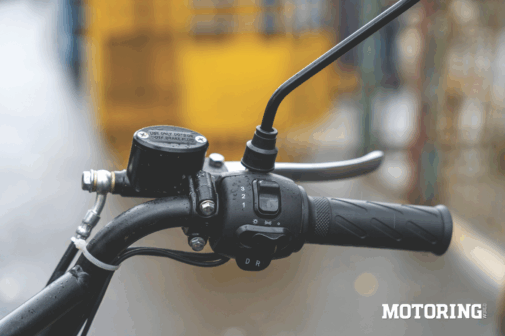
Rather excitedly, then, I set about examining the H1 Loader, having unloaded it from the back of a Piaggio Ape with the help of the delivery assistant and my neighbourhood grocery store owner. You can’t escape its length — or its brazenness — and to call it crude would be a bit generous. It’s a design defined by sharp edges, brutal touches and a creative interpretation of the principles of symmetry. I don’t suppose a scooter of its kind could offer much in the way of vanity, but, even then, the Loader is a bit of a sensory overload.
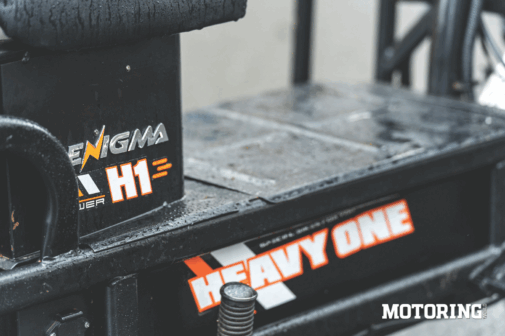
You barely emerge from absorbing the ‘floating’ LED headlight, perched at the very tip of its optional extra basket, when you spot its tremendous instrument screen, large enough to compete with something you’d find in a small car. The remote key is car-like, too, with the exception of a real sweet chirrup it makes the Loader emit every time you lock or unlock it. Your eyes then transition to the secondary side-stand (yes, it has one on each side) and then, quickly, towards the plethora of footpeg/footboard options. The seat, soft as a tub of candy floss, flows abruptly onto a large-ish bench with a — I can’t find a better way to describe this — buttcrack.
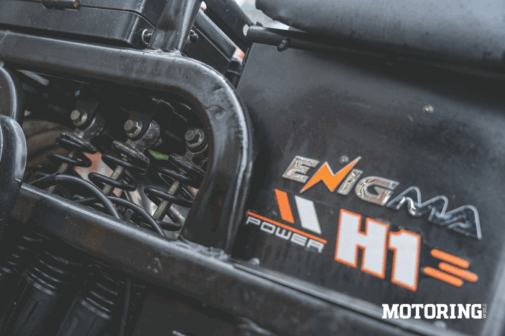
In reality, a spring-loaded latch right at the back of this arrangement reveals it to be a retractable pillion/s seat, which instantly transforms into a loading bay. Tactful. Here, you will also find a foldable backrest — they really do think of everything, don’t they? In the process of reinstating the throne (come on, play along), the latch did severely foul with the backrest, damaging it just short of the point of it requiring replacement. The Loader really can withstand abuse and this, coincidentally, bodes well for this story.
As I emerged from a heady trance, my mind racing to process everything I had just been introduced to, I decided to persist. A ride fixes everything, as they say. Vehicles of this undefined category are, as you know, exempted from registration owing to their 25-kph top-speed cap, so speed, clearly, wasn’t in the offing. Fortunately, my curiosity did get the better of me and I soon discovered that the Loader comfortably crosses its mandated speed limit. With a pillion in tow — and towing fairly heavy cargo (me) — we were hurtling down at a speedo indicated 45 kph. I believe the Loader can go even faster, with more room and a lighter rider. Interesting, especially considering this is in clear violation of the guidelines.
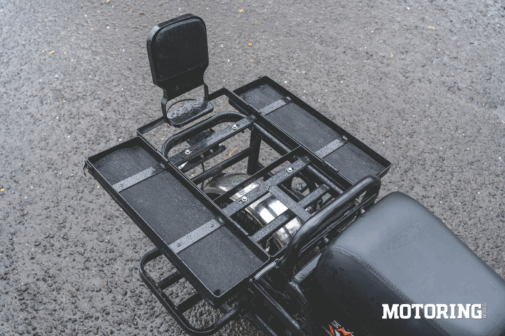
In this continuum of speed and discovery, I also learnt that the brakes are quite poor (it’s got a disc at either end) but nowhere as much as the tyres. The BKT-branded 12-inch tyres offer none of the known properties of grippy rubber and, somehow, despite their diameter, the Loader feels continually rickety. You might expect its low centre of gravity to give it the stability of a North Korean monarchy, but somehow that feeling remains elusive. The culprit, partly, is the rear suspension which, by using a total of six shock absorbers, brutally outnumbers the front, even if it doesn’t necessarily outperform it. How about three telescopic forks to balance it out, Enigma?
A larger part of the problem is the chassis itself. The longitudinal ‘railing’ on the Loader, essentially its core structural component, lends itself brilliantly… to a police barricade. On a scooter, it feels plain absurd. Truthfully, I found it difficult to shake off the feeling that the Loader was welded together by a civil works fabricator rather than by someone qualified in motorcycle engineering. I must, however, add that while this assessment is an honest one, it isn’t contextual in the least.
Enigma, you see, isn’t trying to sell the Loader as an alternative to the R15. The Loader has an entirely unique audience, one which has a real problem to solve — affordable commercial transportation that’s free from the clutches of the law. Light commercial vehicles (actually, all commercial vehicles) are always at the mercy of corrupt officials, and it’s this corruption that often carves an agonising hole in the wallets of small business owners. The Loader and others of its ilk are, therefore, a crafty solution to this mess. Its lack of nuanced engineering or sub par dynamics are the least of the Loader buyer’s concerns. Downtime is the death knell of the commercial mobility space and the Loader, thus, works to a simple brief — run all day long. Which it does.
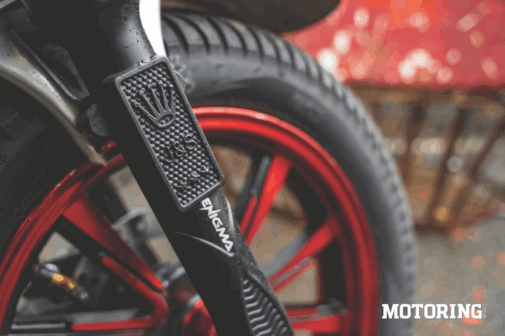
Enigma claims the Loader will go 120 km on a full charge which, in turn, takes about 4 hours to achieve using a domestic three-pin socket. You have the option to remove the (20-odd kg) battery and charge it via a simple connector or to directly plug it into a wall socket and, I’m told, it takes roughly Rs. 15 per charge. Over a 30,000-km annual riding cycle, then, you’ll effectively spend just Rs. 4500 on charging. That’s cheaper than walking, effectively, and an easy justification for the Rs. 40,000 premium Enigma charges for the Loader (it costs Rs. 1.05 lakh) over, say, a TVS XL 100. Long-term math in terms of pure running costs is tilted heavily in the Loader’s favour, even if the cost of battery replacement and out-of-warranty expenses will eventually reverse the scales. The 3-year battery warranty and 1-year warranty on the motor, converter and controller do offer some comfort, though. All of this is, of course, worthless if your business strategy is destined for doom.
That leaves us with a conundrum. I thought I’d loathe the Loader for being an offensive, impure take on the motorcycle and its derivatives, and I partly do. But there’s a bigger problem with it than its form and function. That problem is of intent. The Loader isn’t taxed to use the road — you and I are — and yet you have no choice but to share road space with it. The law, meanwhile, applies itself selectively — to you alone, that is. Of course, this has its roots in our utter lack of belief in the road as an institution rather than a mere infrastructural amenity.
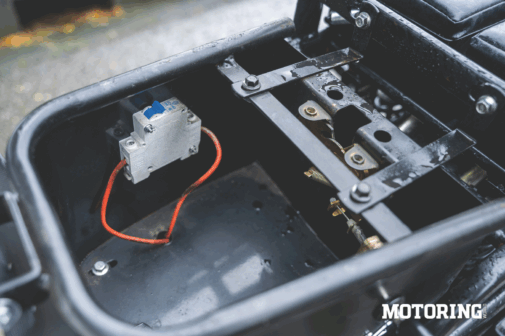
I also strongly dislike that Enigma (among others, I hear) has sneakily enabled the Loader to cross its speed cap. Is a 25-kph speed limit ridiculous? Yes. Shouldn’t a 50-kph vehicle require registration, and its rider to be helmet-clad and licenced? Also yes.
Have you considered what happens in a hit-and-run kind of situation, by the way? With no visible unique identification (other than its ungainly design) in the form of a registration number, you could, effectively, be run over by one and the offender could never be found out if, say, the CCTV trail isn’t extensive enough. As is usually the case with policy makers, it may take a publicised death for the authorities to take coercive action. Knee-jerk reactions make for better PR than foresight, no? Even then, for the problem it solves, I still can’t deny that the Loader makes a tonne of sense. A bit literally.
My moral compass thinks otherwise, though. The Loader may be the most noble of mankind’s initiatives since the polio vaccine and that still doesn’t justify it — and its entire category of vehicles — having a free pass on our roads. Not when everyone else (i.e. mainstream manufacturers) endures increasingly throttling regulations. There is, undoubtedly, a fundamental flaw in this premise and it isn’t Enigma’s fault; it’s not as if it’s necessarily exploiting a rulebook either. The problem is, that rulebook simply doesn’t exist. Incredible, no?









